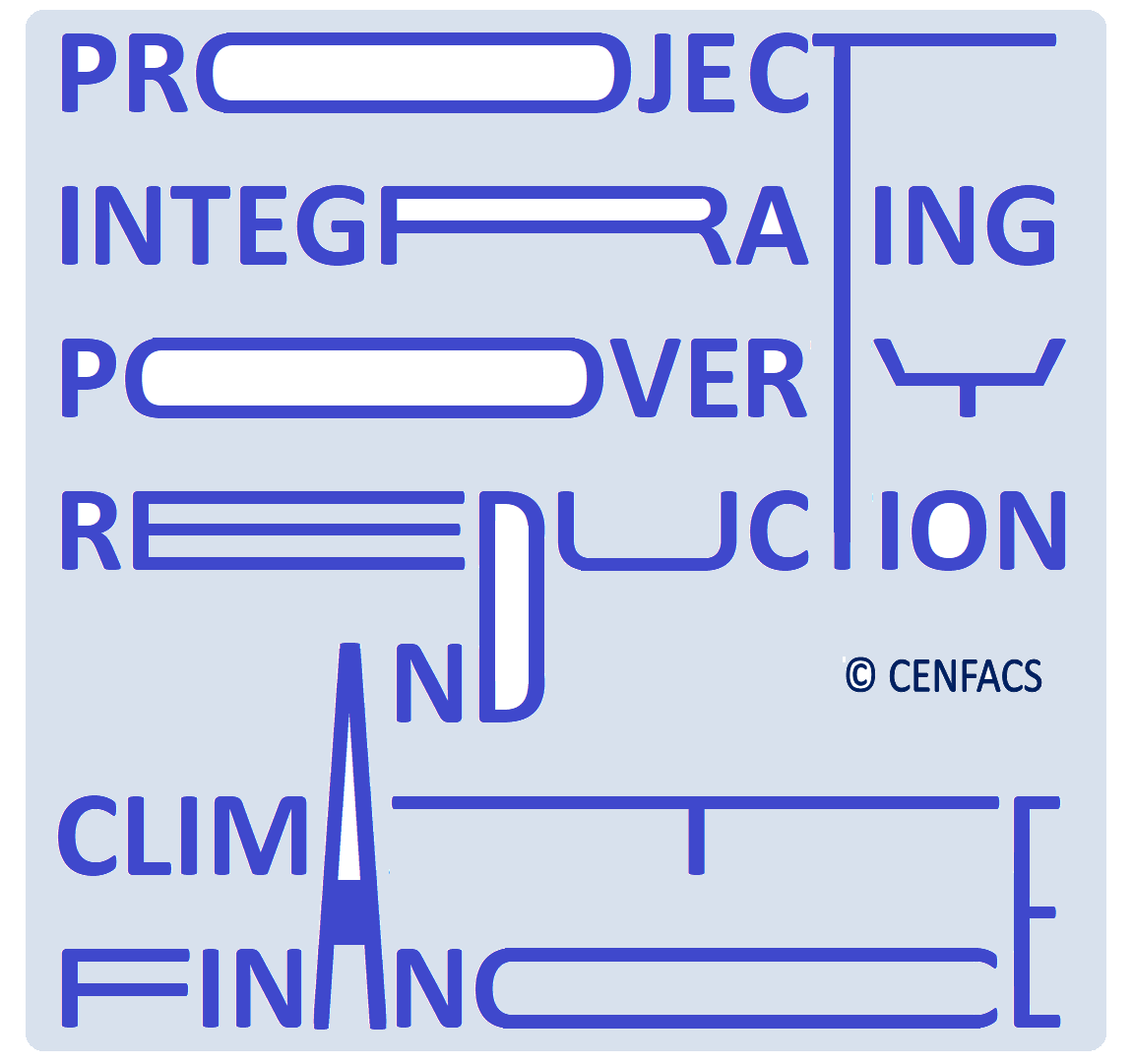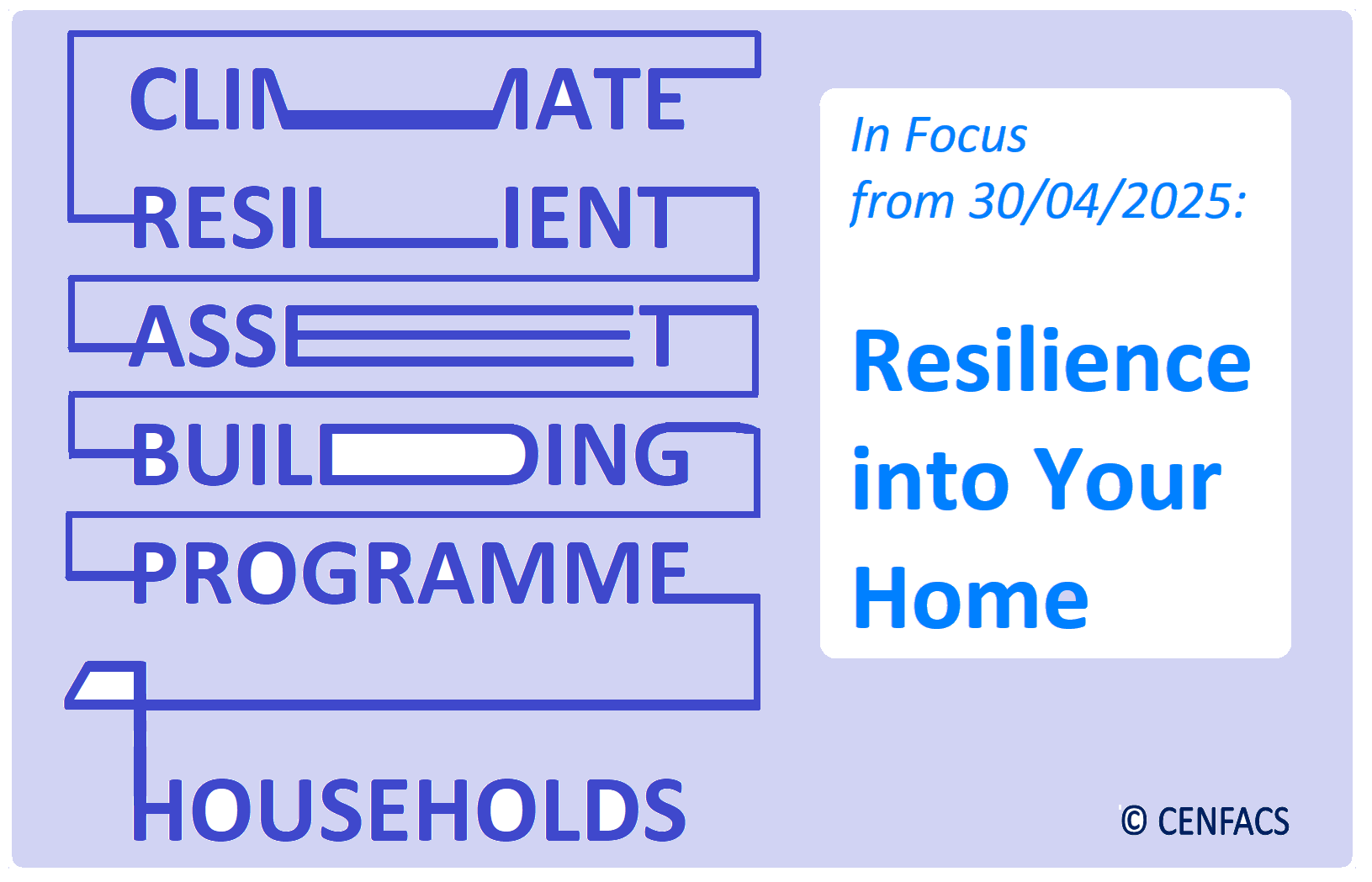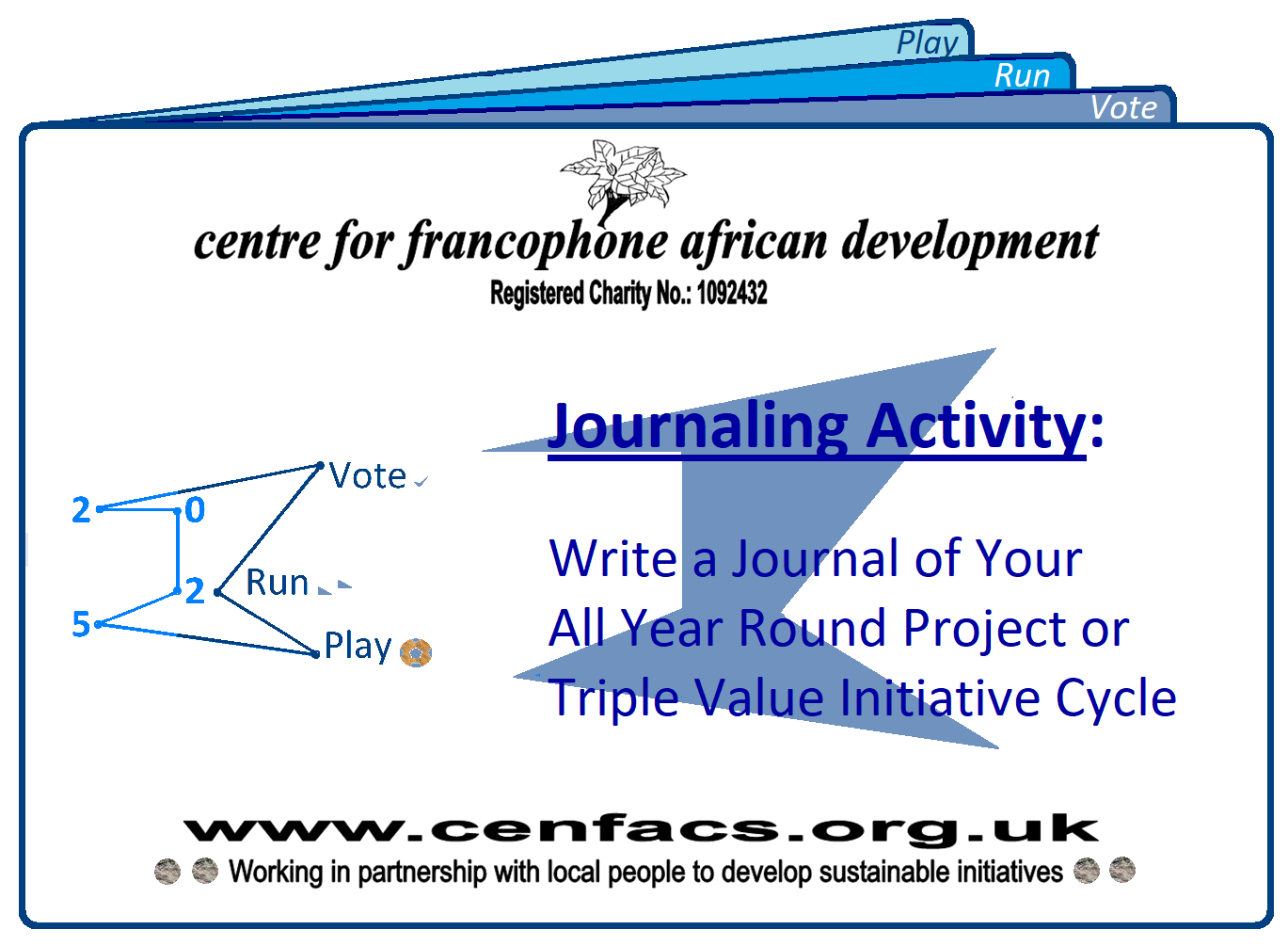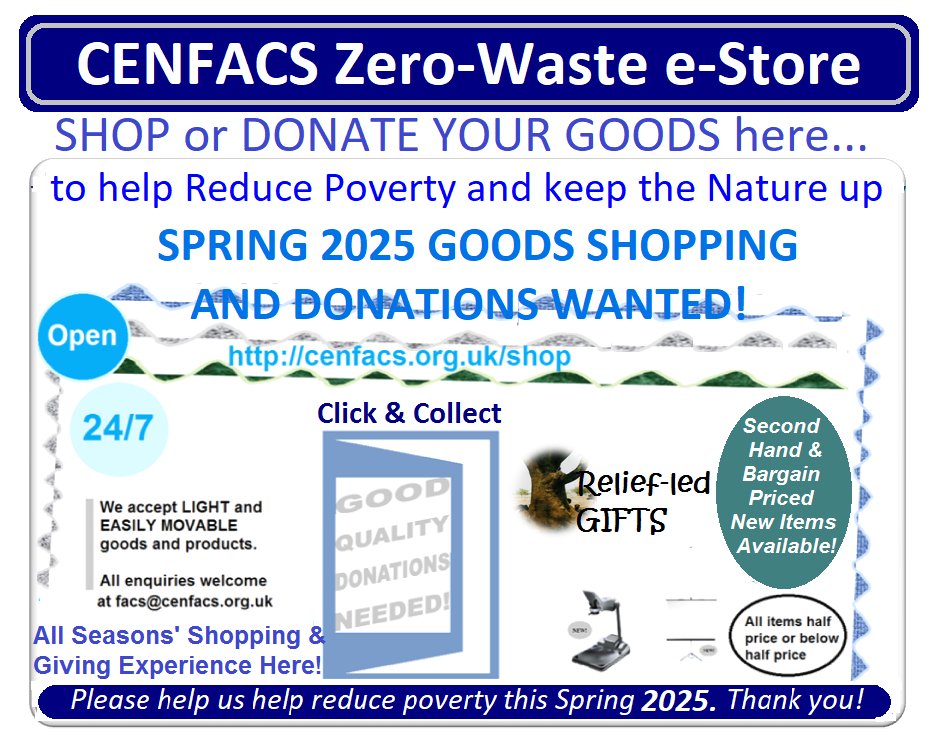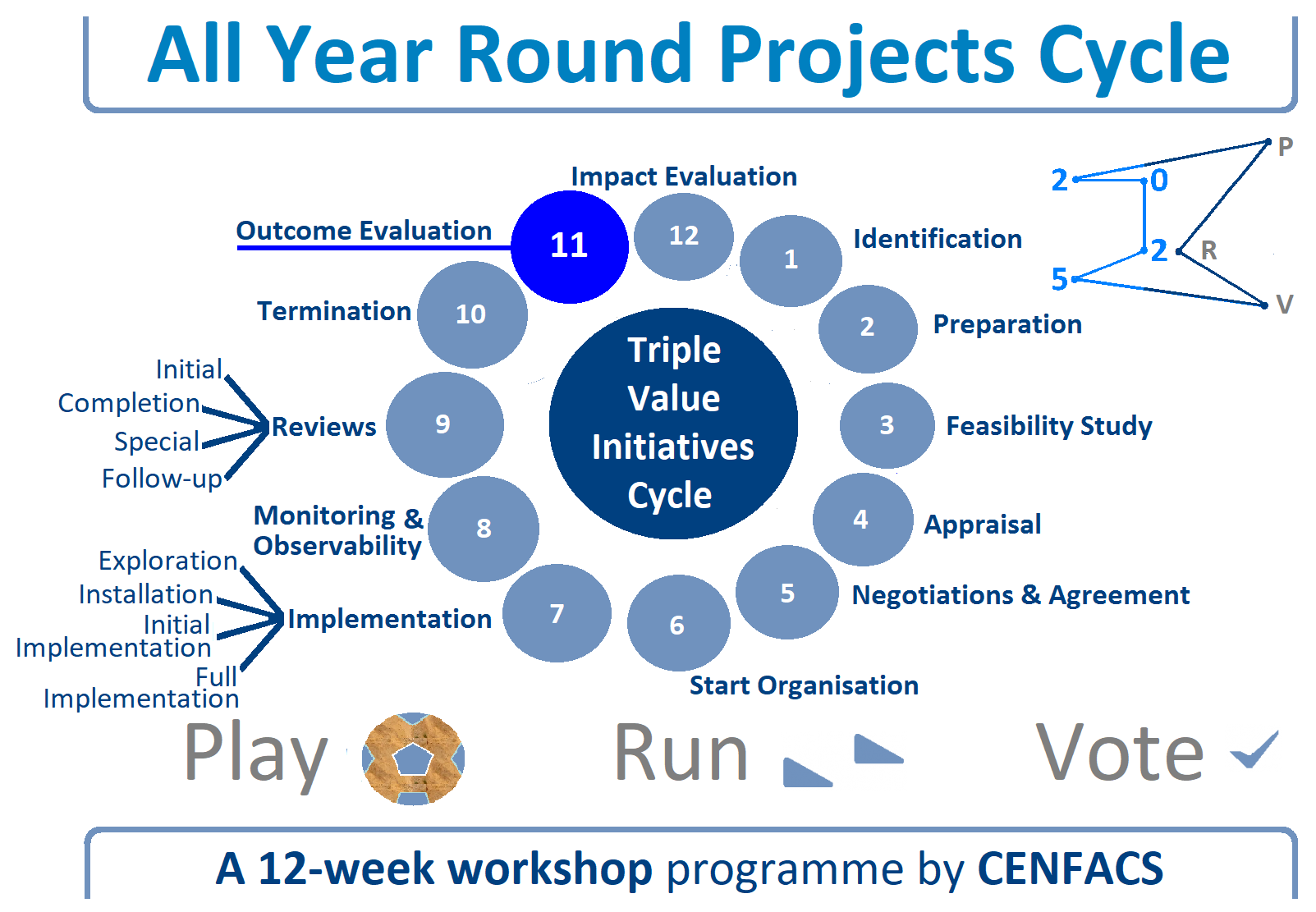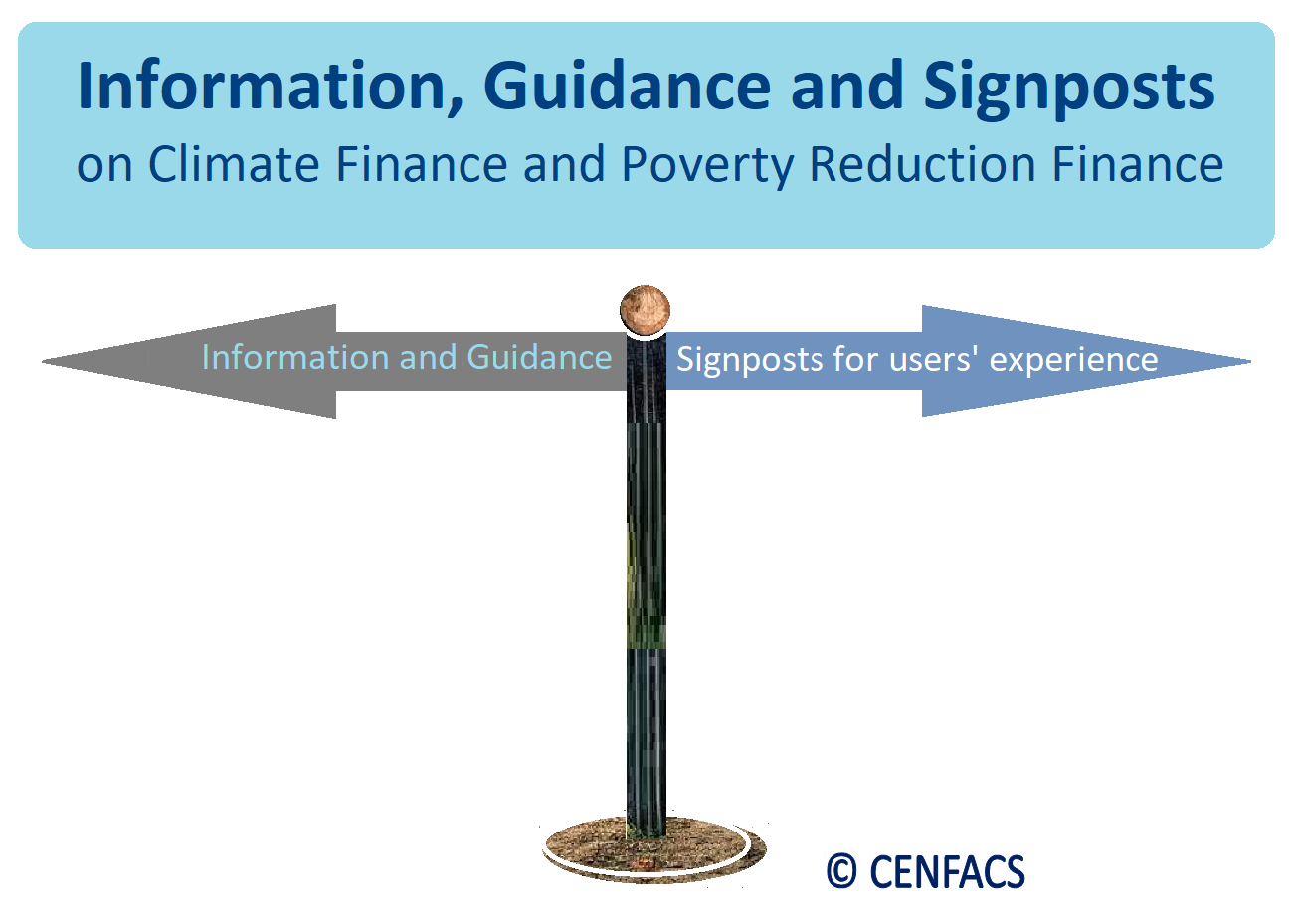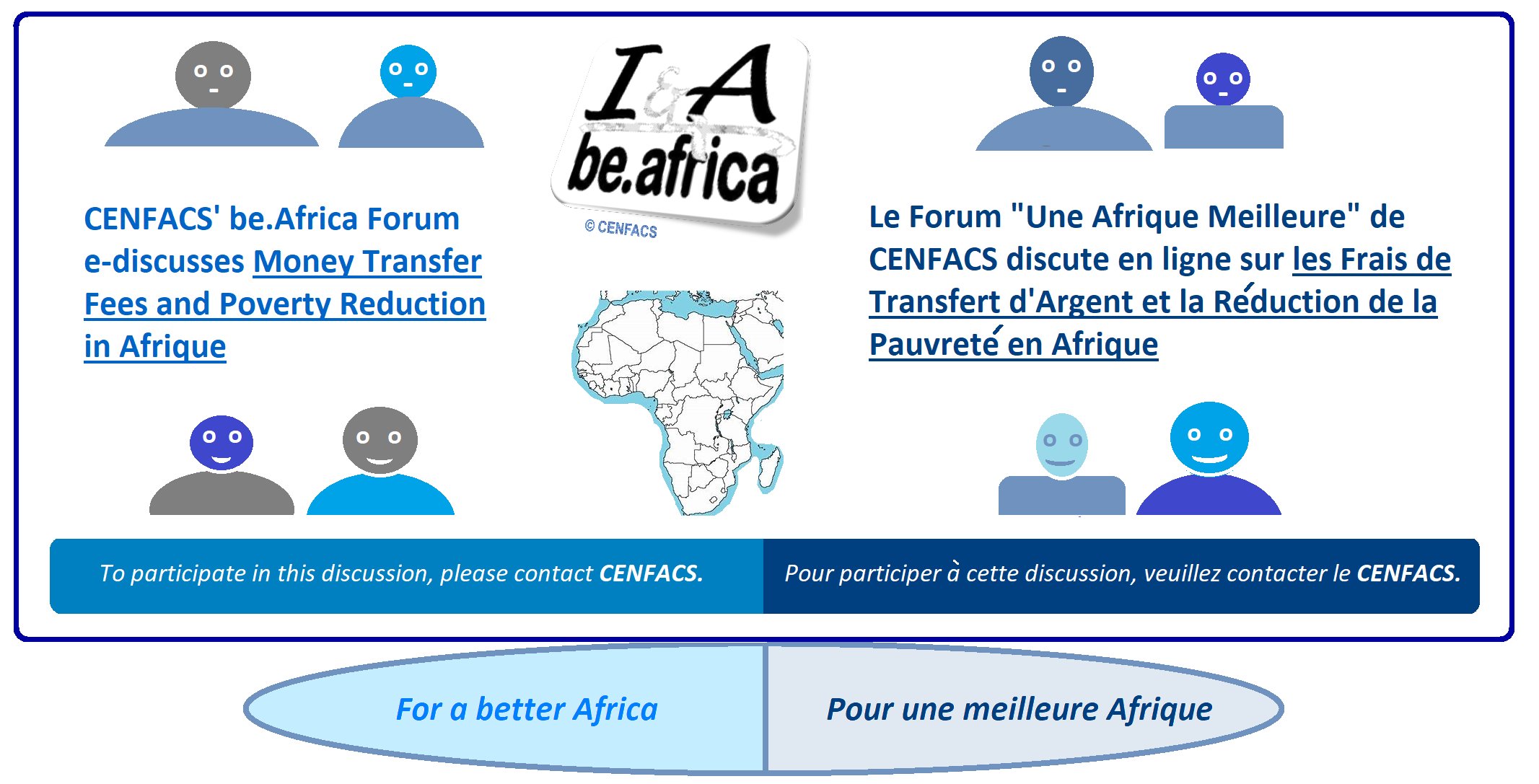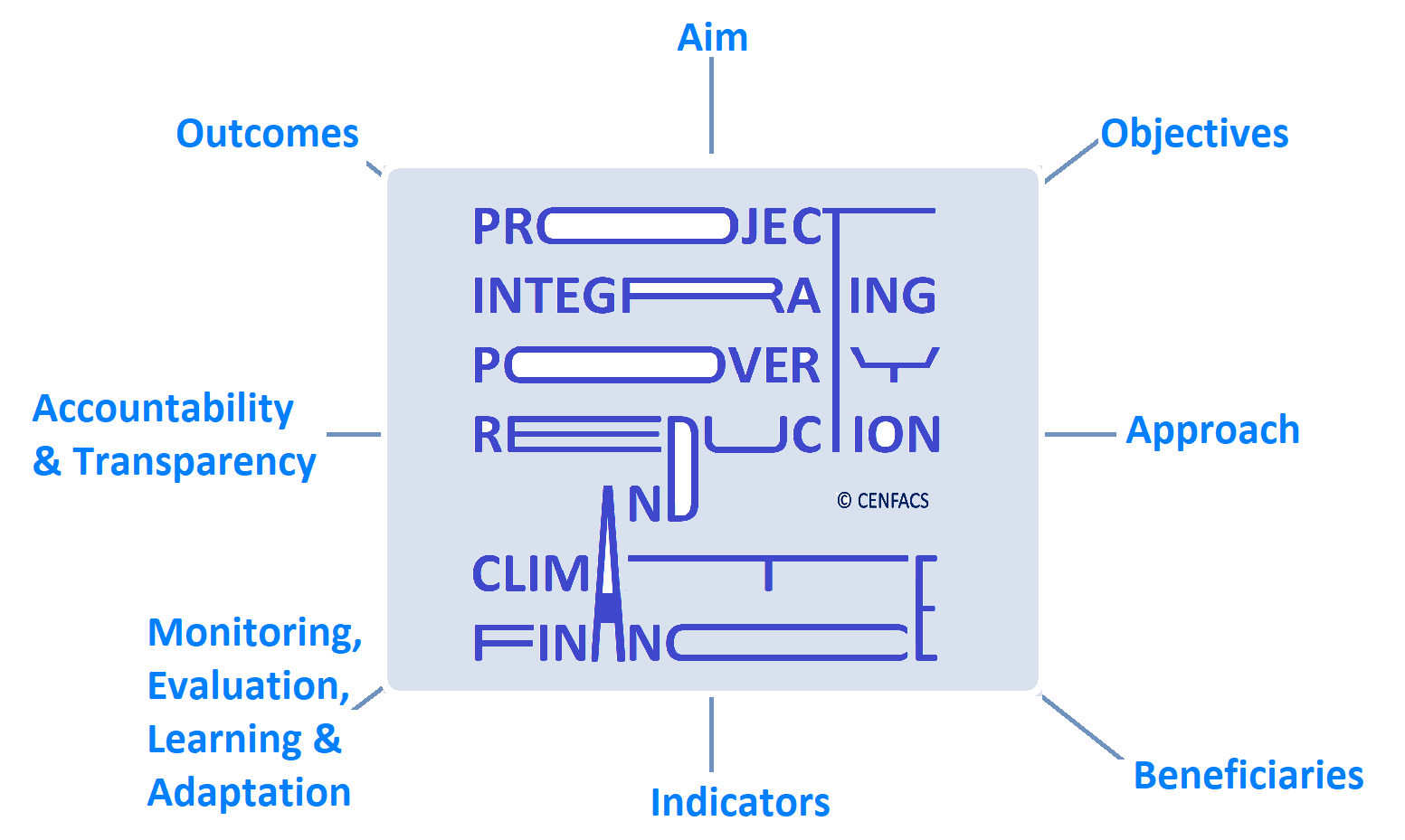Welcome to CENFACS’ Online Diary!
30 April 2025
Post No. 402
The Week’s Contents
• Project Integrating Poverty Reduction and Climate Finance
• Climate-resilient Asset Building Programme for Households – In Focus from 30/04/2025: Resilience into Your Home
• Preview of May 2025 Stories
… And much more!
Key Messages
• Project Integrating Poverty Reduction and Climate Finance
Project Integrating Poverty Reduction and Climate Finance (PIPRCF) takes at practical level many of the ideas put forward in FACS newsletter, Issue No. 87 published last week on this website. How does it take them forward? It takes them further as explained below.
PIPRCF is a smart development project that will have climate co-benefits and contribute to long-term economic opportunities for those in need. PIPRCF is an integrative initiative that strategically directs financial resources to benefit both climate action and poverty reduction efforts.
Integrating climate finance and poverty reduction finance helps to mobilise resources, promote sustainable development pathways, build climate resilience, diversify economic activities, improve access to markets, boost local economy and livelihoods, promote renewable solutions, reduce reliance on fossil fuels, and improve energy access for the poor.
The real aim of this project is to reduce and possibly end poverty linked to the lack of climate action funds and poverty reduction funds. It is a project that help ensure that climate action benefits the most vulnerable populations and contributes to sustainable development goals.
PIPRCF will involve channelling funds towards activities that will simultaneously tackle climate change and reduce poverty. It will ensure that climate action funds are aligned with poverty reduction funds in Africa.
It is hoped that through its implementation, the project will contribute to
~ mitigating the impacts of climate change on poor and vulnerable people
~ promoting sustainable development practices that benefit both people and the planet
~ diversifying livelihoods and reducing reliance on climate sensitive sectors
~ creating a more just and equitable transition to a low carbon development.
To get more insights into this project, please read its key components under the Main Development section of this post.
• Climate-resilient Asset Building Programme for Households – In Focus from 30/04/2025: Resilience into Your Home
To approach this second topic of our programme with households, we are going to explain resilience into your home, what households need to know and the capacities they need to have to stay resilient into their homes.
• • Explaining Resilience into Your Home
Let us start with resilience. Resilience can be explained in many ways. The website ‘assets.publishing.service.gov.uk’ (1) provides a number of definitions of it. It mentions the former DFID’s definition of resilience which is
“The ability of countries, communities and households to manage change by maintaining or transforming living standards in the face of shocks or stresses without compromising their long-term prospects”.
It also mentions climate resilience, which it states that
“It incorporates disaster resilience as well as the ability to cope with longer term climate changes (including transformative change/tipping points)”.
In the context of climate resilient asset building programme, resilience within a home refers to its ability to withstand and recover from climate-related impacts while maintaining functionality and habitability. This includes the design in housing.
Regarding design in housing, the website ‘buildwithrise.com’ (2), explains that
“Resilient design in housing focuses on the ethic or value of increasing the autonomy of a home. In other words, resilient homes attempt to limit their dependency on external inputs while supplying their energy, water, waste, and sewer disposal needs”.
Another approach to resilience comes from the website ‘flooding.org.uk’ (3), which looks at resilience in terms of flooding by arguing that
“Resilience is about reducing the impact of flooding should water get inside your property”.
To reduce the impact of flooding, households can use a tool like property protection advisor.
The above-mentioned definitions can be helpful when households are trying to learn resilience into their homes and to apply them in order to stay resilient. This implies they need to know more about their homes.
• • What Households Need to Know about Their Homes
In terms of resilience into their homes, households may need to have some basic knowledge or information about their homes’ resilience. This could be some knowledge or information about the following:
~ Structure design of their home/property
(for instance, knowing that their home can withstand extreme weather events, the selection of materials made for their homes if the materials are resilient or not, the adaptability of their homes to changing conditions)
~ System design
(for example, learning about their home if it is energy efficient, water-efficient and has critical resilient systems)
~ Adaptation and response
(Households could be aware of the emergency plans and preparedness measures linked to their property, the ability to recover from caused damages by climate events, and sustainable design principles of their home)
~ Location
(Households could try to find out the flood risk assessment where their property is located, climate-specific design attached to their property or house, the overall resilience of the community within which they live; including if their property is located on a safe site).
By having the basic knowledge about the above-mentioned elements, households can create or build climate-resilient assets that can withstand and adapt to changing climate. However, to stay resilient they may need some capacities.
• • Capacities to Stay Resilient into Your Home
They include the following:
~ Anticipatory capacity: Through preparation, household systems can develop some ability to anticipate and reduce the impact of climate variability
~ Adaptive capacity: Household systems can adapt to climate change risks, learn and adjust after a disaster
~ Absorptive capacity: Household systems can learn to cope with the impacts of climate variability
~ Transformative capacity: Household systems can develop the capacity to adapt to, anticipate and absorb shocks.
Household systems may need to have the above-named capacities or features to stay resilient.
Those households that are struggling to develop these capacities in order to build climate-resilient assets, they can work with CENFACS.
For any queries and/or enquiries about Resilience into Your Home in the context of Climate-resilient Asset Building Programmes for Households (including how to access this programme), please do not hesitate to contact CENFACS.
• Preview of May 2025 Stories
This coming May 2025, we shall run two-series or “two horses” stories: after-system-reset stories and after-system-change stories. What are they?
a) After-system-reset stories are the tales of reinstallation, restoration, reconfiguration and updating of our system of poverty reduction or life. They will be about how people and communities are trying or have tried to reinstall, restore, reconfigure and update things in their life to reduce or end poverty or simply improve their life.
b) After-system-change stories are the accounts of stabilisation and initial testing, ongoing maintenance and support, continuous improvement and adaptation, documentation and knowledge management, and maintenance of our system of poverty reduction or life. They will be about how people and communities are trying or have tried to stabilise, test, communicate, monitor and maintain things in their life to reduce or end poverty or simply improve their life.
Entries for these Stories on Poverty Relief and Development for May 2025 (May Stories) are now open.
To tell and share your story of after resetting and/or changing systems, please contact CENFACS for story telling terms and conditions.
Extra Messages
• Shop at CENFACS’ Zero Waste e-Store during This Spring Giving Season
• All-year Round Projects Cycle (Triple Value Initiatives Cycle) – Step/Workshop 11: Outcome Evaluating Your Play, Run and Vote Projects
• Information and Guidance on Climate Finance and Poverty Reduction Finance
• Shop at CENFACS’ Zero Waste e-Store during This Spring Giving Season
CENFACS e-Store is opened for your Spring goods donations and goods purchases.
At this time, many household expenditures have been squeezed by the cost of living pressures mostly driven by the hikes in prices of basic life-sustaining needs (e.g., food, transport, housing, council tax, energy, etc.).
The impacted of the cost of living pressures need help and support as prices and bills are still higher while real disposable incomes are less for many of those living in poverty.
Every season or every month is an opportunity to do something against poverty and hardships. This coming May 2025 too is a good and great month of the year to do it.
You can donate or recycle your unwanted and unneeded goods to CENFACS’ Charity e-Store, the zero waste shop built to help relieve poverty and hardships.
You can as well buy second hand goods and bargain priced new items and much more.
CENFACS’ Charity e-Store needs your support for SHOPPING and GOODS DONATIONS.
You can do something different this Season of Goods Donations by SHOPPING or DONATING GOODS at CENFACS Charity e-Store.
You can DONATE or SHOP or do both:
√ DONATE unwanted GOODS, GIFTS and PRODUCTS to CENFACS Zero Waste e-Store this coming May and Spring.
√ SHOP at CENFACS Zero Waste e-Store to support noble and beautiful causes of poverty relief this coming May and Spring.
Your SHOPPING and or GOODS DONATIONS will help to the Upkeep of the Nature and to reduce poverty and hardships brought by the cost of living pressures.
This is what the Season of Giving is all about.
Please do not hesitate to donate goods or purchase what is available at CENFACS Zero Waste e-Store.
Many lives have been threatened and destroyed by the cost of living pressures.
We need help to help them come out poverty and hardships caused by these pressures.
To donate or purchase goods, please go to: http://cenfacs.org.uk/shop/
• All-year Round Projects Cycle (Triple Value Initiatives Cycle) – Step/Workshop 11: Outcome Evaluating Your Play, Run and Vote Projects
Normally, at the beginning of a project or activity, planners of this project or activity will indicate how they plan to evaluate it. Planners can think of pre-project evaluation, ongoing project evaluation and post-project evaluation. However, what is project evaluation for them?
• • Basic Understanding of Project Evaluation
To simplify the matter, we are referring to what Anna Allen and Catriona May (4) say about it, which is:
“Evaluation is a process of assessing what an activity or project achieves, particularly in relation to the overall objectives” (p. 36)
There are many types of evaluation depending on the areas of emphasis. Evaluation can be before the project starts (pre-project evaluation), when the project is in progress (ongoing evaluation) and when the project is finished (post-project evaluation). Evaluation can also be formative, process/implementation, outcome/effectiveness and impact. It all depends on what you want to achieve in evaluating a project.
In the Step/Workshop 11, we are interested in Outcome Evaluation.
• • • What is an outcome evaluation?
To understand outcome evaluation, one may need to know outcome. Outcome has been described in the United Nations Development Programme’s Guidance on Evaluation (5) as
“The intended changes in development conditions that result from the interventions of governments and other stakeholders, including international development agencies such as UNDP. They are medium-term development results and the contributions of various partners and non-partners. Outcomes provide a clear vision of what has changed or will change globally or in a particular region, country or community within a period of time” (p. 3)
Knowing what is outcome, it is possible to explain outcome evaluation. According to ‘evalcommunity.com’ (6),
“Outcome evaluation is a type of evaluation that focuses on measuring the results or outcomes of a programme or intervention. It is a systematic and objective process that involves collecting and analysing data to determine whether the programme is achieving its intended goals and objectives, and whether the outcomes are meaningful and beneficial to the target population”.
The same ‘evalcommunity.com’ states that there are many types of outcome evaluation which include impact evaluation, outcome-focused evaluation, process evaluation, cost-benefit analysis, and realist evaluation.
In this Step/Workshop 11, we are dealing with outcome-focused evaluation.
Let us exemplify this.
• • Example of Outcome Evaluating Your All-year Round Projects
Let us assume that one of our users decides to organise a 4-Km-a-day Run Project to raise money for CENFACS’ one of its noble and beautiful causes of poverty reduction, which is to support Africa-based Sister Organisations currently helping displaced persons in the Eastern part of the Democratic Republic of Congo.
In order to outcome evaluate the 4-Km-a-day Run Project, our all-year-round project user will proceed with the following:
∝ Ensure that their project is on course and identify the problems as they come up
(Type of problems could be if everybody taking the run manages to run 4 kilometres or not)
∝ Measure progress towards their objectives
(E.g., if one of the objectives was to raise £500 on a particular day, they will check fundraising progress about this objective)
∝ Seize new window of opportunities
(For instance, if more people turn up than initially expected, our all-year-round project user can think of the possibility of running the activity again another day)
∝ Deal with any challenges during project implementation
(Like to organise a networking/talk session for the extra number of attendees who could not take part in the run because there is a restriction on the number of runners)
∝ Recognise success and failure
(I.e., our all-year-round project user will find out what went wrong or well during the Run Project)
∝ Give some recommendations for the future run of the project
(I.e., ask participants to make suggestions or tell them how you will improve the project if you decide to run it again)
∝ Keep all records
(Of the number of participants/runners, all the people involved, money raised, incidents, accidents, reports, etc.)
∝ Conduct a progress review
(If it is the second time to run your project, you will review the progress made in comparison with the previous run)
∝ Complete evaluation in due course
(I.e., remember to tick all the boxes of you evaluation sheets/forms when you finishes your project).
The above is one of the possible ways of outcome evaluating your All-year Round Projects. For those who would like to dive deeper into Outcome Evaluation of their Play or Run or Vote project, they should not hesitate to contact CENFACS.
• Information and Guidance on Climate Finance and Poverty Reduction Finance
As part of the continuation of our work on African Charities and Finance for Climate and Poverty Reduction – which is the main theme of Issue 87 of our newsletter ‘FACS‘- we are available to give Information and Guidance to Africa-based Sister Organisations in need. This seasonal service includes two types areas of support via CENFACS, which are:
a) Information and guidance on climate finance and poverty reduction finance
b) Signposts to improve Users’ Experience about impact investing in climate finance and poverty reduction finance.
Let us briefly explain them.
• • Information and Guidance on Climate Finance and Poverty Reduction Finance
Those Africa-based Sister Organisations (ASOs) that are looking for information and guidance on climate finance and that do not know what to do or where to go, they can work with CENFACS. Working with them includes two areas of support:
i) Conducting a needs assessment with them under CENFACS’ International Advice Service
ii) Providing them with leads about other organisations, institutions and services that can help them.
We can provide information and guidance to address climate finance issues and support to ASOs to reduce poverty and address the impacts of climate change.
The support aims to help ASOs adapt to climate change. mitigate its impacts, pursuit low-carbon development, manage resources sustainably, etc.
• • Signposts to improve Users’ Experience about Impact Investing in Climate Finance and Poverty Reduction Finance
For those who are looking for whereabout to find help about impact investing in climate finance and poverty reduction finance, we can direct them to the relevant services and organisations.
More tips and hints relating to the matter can be obtained from CENFACS‘ Advice-giving Service and Sessions.
To access this service, they need to contact CENFACS.
Message in English-French (Message en Anglais-Français)
• CENFACS’ be.Africa Forum E-discusses Money Transfer Fees and Poverty Reduction in Africa
It is well known that international money transfer can play a significant role in reducing poverty in Africa. It plays it in value as percentage of gross domestic product, economic impact, resilience and equalization. This is without forgetting the role of digital remittances. What is this role?
• • Role of International Money Transfer
To highlight this role, the website ‘daimagister.com’ (7) argues that
“Remittances play a pivotal role in many African economies, significantly contributing to their Gross Domestic Product (GDP). In 2022, remittances accounted for an average of 7.6% of GDP in Western Africa, 6.8% in Eastern Africa, 4.4% in Northern Africa, 3.7% in Southern Africa, and 1.4% in Central Africa”.
Similarly, ‘remitscope.org’ (8), states that
“In 2023, according to the World Bank, over $90 billion flowed into Africa in remittances which is approximately twice the level of overseas development assistance”.
But, what is international money transfer?
• • Brief Understanding of International Money Transfer
According to ‘blog.9ov9.com’ (9),
“An international money transfer refers to the movement of funds across national borders. The process facilitates transactions between parties situated in different countries, encompassing a diverse range of financial activities”.
A common example, says ‘blog.9ov9.com’, is the international transfer of funds by migrant workers to their home countries, like those to support families in lower-income countries of Africa.
International money transfer could even play a further role at the moment as Africa is experiencing aid cuts. It could substitute aid cuts in some areas of humanitarian assistance. However, to transfer money to Africa there are fees to be paid like in any financial transaction. These fees and their structure can impact poverty reduction in Africa.
• • The Impact of the Cost of Remittances on Poverty Reduction
The problem surrounding money transfer is not about paying a fee to send money. The issue is when these fees (or costs of sending remittances) are high and negatively impact on the effects that money transfers would have had on poverty reduction.
In this respect, the website ‘africa.businessinsider.com’ (10) quotes the World Bank’s report on remittances which states that
“Sub-Saharan Africa is still the most expensive region in the world to transfer money to, with an average remittance cost of 8.37% in the second quarter of 2024”.
Indeed, many traditional banks and remittances services charge fees, which could be flat or percentage-based ones or a combination of both. The structure of these fees, which can vary, could impact the overall cost for different transaction sizes. It is these fees which are subject of our e-discussion.
• • Money Transfer Fees as a Subject of Discussion
Our e-discussion is about the structure of these fees and what can be done to reduce them at an affordable level in order to maximise the impact of remittances for both money senders and receivers. There are those who think that cutting fees on money transfers could help Africa to overturn the shrinking of foreign aid.
For instance, Michael Sheldrick (11) argues that
“Migrants workers send home more money than foreign aid, but high transfer fees consume their funds. Lowering fees to 30% could save African families $16 billion annually”.
The above is what our e-discussion is about.
Those who may be interested in this discussion can join our poverty reduction pundits and/or contribute by contacting CENFACS be.Africa Forum, which is a forum for discussion on poverty reduction and sustainable development issues in Africa and which acts on behalf of its members by making proposals or ideas for actions for a better Africa.
To contact CENFACS about this discussion, please use our usual contact address on this website.
• Le Forum ‘Une Afrique Meilleure’ de CENFACS discute en ligne sur les Frais de Transfert d’Argent et la Réduction de la Pauvreté en Afrique
Il est bien connu que les transferts d’argent internationaux peuvent jouer un rôle important dans la réduction de la pauvreté en Afrique. Ils jouent sur la valeur en pourcentage du produit intérieur brut, l’impact économique, la résilience et la péréquation. Ceci sans oublier le rôle des transferts de fonds numériques. Quel est ce rôle ?
• • Rôle du transfert d’argent international
Pour souligner ce rôle, le site internet « daimagister.com » (7) fait valoir que
« Les envois de fonds jouent un rôle central dans de nombreuses économies africaines, contribuant de manière significative à leur produit intérieur brut (PIB). En 2022, les envois de fonds représentaient en moyenne 7,6 % du PIB en Afrique de l’Ouest, 6,8 % en Afrique de l’Est, 4,4 % en Afrique du Nord, 3,7 % en Afrique Australe et 1,4 % en Afrique Centrale ».
De même, la « remitscope.org » (8) énonce que
« En 2023, selon la Banque Mondiale, plus de 90 milliards de dollars ont été versés en Afrique sous forme de transferts de fonds, soit environ le double du niveau de l’aide publique au développement ».
Mais qu’est-ce que le transfert d’argent international ?
• • Brève compréhension du transfert d’argent international
Selon blog.9ov9.com (9),
« Un transfert d’argent international fait référence au mouvement de fonds à travers les frontières nationales. Le processus facilite les transactions entre des parties situées dans différents pays, englobant un large éventail d’activités financières ».
Un exemple courant, dit blog.9ov9.com, est le transfert international de fonds par les travailleurs migrants vers leur pays d’origine, comme ceux destinés à soutenir les familles dans les pays à faible revenu d’Afrique.
Les transferts d’argent internationaux pourraient même jouer un rôle supplémentaire à l’heure actuelle, alors que l’Afrique connaît des coupes dans l’aide. Elle pourrait se substituer à des réductions d’aide dans certains domaines de l’aide humanitaire. Cependant, pour transférer de l’argent vers l’Afrique, il y a des frais à payer comme dans toute transaction financière. Ces frais et leur structure peuvent avoir un impact sur la réduction de la pauvreté en Afrique.
• • L’impact du coût des envois de fonds sur la réduction de la pauvreté
Le problème du transfert d’argent n’est pas de payer des frais pour envoyer de l’argent. Le problème se pose lorsque ces frais (ou coûts d’envoi de fonds) sont élevés et ont un impact négatif sur les effets que les transferts d’argent auraient eus sur la réduction de la pauvreté.
À cet égard, le site internet « africa.businessinsider.com » (10) cite le rapport de la Banque Mondiale sur les envois de fonds, qui indique que
« L’Afrique subsaharienne reste la région la plus chère au monde pour les transferts d’argent, avec un coût moyen des transferts de fonds de 8,37 % au deuxième trimestre 2024 ».
En effet, de nombreuses banques et services de transfert de fonds traditionnels facturent des frais, qui peuvent être fixes ou basés sur un pourcentage, ou une combinaison des deux. La structure de ces frais, qui peut varier, peut avoir un impact sur le coût global pour différentes tailles de transactions. Ce sont ces frais qui font l’objet de notre discussion en ligne.
• • Les frais de transfert d’argent en tant que sujet de discussion
Notre discussion en ligne porte sur la structure de ces frais et sur ce qui peut être fait pour les réduire à un niveau abordable afin de maximiser l’impact des envois de fonds pour les expéditeurs/rices et les destinataires d’argent. Il y a ceux ou celles qui pensent que la réduction des frais sur les transferts d’argent pourrait aider l’Afrique à renverser la réduction de l’aide étrangère.
Par exemple, Michael Sheldrick (11) soutient que
« Les travailleurs migrants envoient plus d’argent que l’aide étrangère chez eux, mais les frais de transfert élevés consomment leurs fonds. Réduire les frais de transfert à 30 % pourrait permettre aux familles africaines d’économiser 16 milliards de dollars par an ».
Ce qui précède est l’objet de notre discussion en ligne.
Ceux ou celles qui pourraient être intéressé(e)s par cette discussion peuvent se joindre à nos experts en réduction de la pauvreté et/ou contribuer en contactant le ‘me.Afrique’ du CENFACS (ou le Forum ‘Une Afrique Meilleure’ de CENFACS), qui est un forum de discussion sur les questions de réduction de la pauvreté et de développement durable en Afrique et qui agit au nom de ses membres en faisant des propositions ou des idées d’actions pour une Afrique meilleure.
Pour contacter le CENFACS au sujet de cette discussion, veuillez utiliser nos coordonnées habituelles sur ce site Web.
Main Development
• Project Integrating Poverty Reduction and Climate Finance (PIPRCF)
The following items provide the key information about PIPRCF:
σ Definition of PIPRCF
σ The Aim of PIPRCF
σ PIPRCF Approach
σ PIPRCF Objectives
σ PIPRCF Beneficiaries
σ PIPRCF Outcomes
σ PIPRCF Indicators
σ Impact Monitoring, Evaluation, Learning and Adaptation
σ Accountability and Transparency
σ Project Funding Status.
Let us summarise each of these items.
• • Definition of PIPRCF
PIPRCF is a SMART (that is, specific, measurable, attainable, relevant and time-bound) development project that integrates poverty reduction and climate finance. Key aspects of PIPRCF include co-benefits, targeted funding, inclusive development, policy integration, accountability and transparency.
For instance, the co-benefits aspect means that PIPRCF will contribute to long-term economic opportunities while supporting adaptation (that is, based on building resilience to the types of shocks that upend lives and livelihoods) and mitigation (i.e., cutting greenhouse gas emissions). The integration aspect is the link between social protection and climate resilience.
The above-mentioned aspects are also articulated in PIPRCF aim.
• • The Aim of PIPRCF
PIPRCF aims to address both climate change and poverty reduction simultaneously by leveraging climate finance to support activities and policies that also benefit vulnerable and poor people in Africa.
This aim will be achieved by prioritising activities with co-benefits (i.e., activities that reduce greenhouse gas emissions, enhance climate resilience and improve livelihoods), ensuring inclusive and equitable outcomes, fostering collaboration and partnerships, tracking and evaluating progress, and consolidating achievements.
To deliver this aim, PIPRCF needs to have a particular approach.
• • PIPRCF Approach
PIPRCF uses approach that recognizes the interconnectedness of issues where climate change disproportionally impacts the poor and hinders development, and where poverty reduction efforts can also contribute to climate resilience and mitigation. In other words, climate change disproportionally impacts poor and marginalised communities. On the rebound, poverty reduction efforts can contribute to climate action.
This can be elucidated by PIPRCF Objectives.
• • PIPRCF Objectives
Key PIPRCF Objectives include the following:
~ reduce poverty and inequality
~ enhance gender and socio-economic inclusion
~ address both climate change and poverty simultaneously
~ mitigate climate change and promote adaptation
~ mobilise and synergise resources
~ strengthen beneficiaries’ socio-economic protection and resilience
~ foster just transitions to navigate to net zero in Africa
~ promote green growth and sustainable development.
Although these objectives are put together, they can be differentiate between those linked to poverty reduction, those relating to climate and those connected to both (that is, connected to both poverty reduction and climate).
• • PIPRCF Beneficiaries
PIPRCF will cater for the most vulnerable to the impacts of climate change and those living in poverty in Africa. Amongst the types of people in need who could benefit from PIPRCF, we can mention the following:
~ those facing climate-related risks (like natural disasters, food insecurity, and health issues)
~ those dependent on climate-sensitive sectors like agriculture and fisheries
~ those lacking access to resources and services
~ those whose livelihoods have been disrupted
~ Africa-based Sister Organisations looking for finances for climate and poverty reduction
etc.
Most of the above-mentioned types of beneficiaries will need some form of support in terms of guidance on how they can find climate finance and poverty reduction finance.
• • PIPRCF Outcomes
PIPRCF will have co-benefits as it is designed to deliver both climate adaptation and mitigation benefits and poverty reduction outcomes. The changes and effects that may happen as a result of PIPRCF include the following:
~ improved adaptation to climate change
~ enhanced access to clean energy and technology
~ strengthened protection
~ synergistic benefits
~ resilience building
~ green and blue opportunities and livelihoods
~ addressed vulnerabilities
~ improved infrastructures for beneficiaries
~ fair distribution of resources
etc.
Briefly, these outcomes will happen in the people who will benefit from PIPRCF. They will also happen in the environment, communities and Africa-based Sister Organisations (ASCOs) that will involve in PIPRCF.
• • PIPRCF Indicators
The set of measures below will help find out whether or not the project will reach its desired objectives and progress towards meeting its defined aim. These measures include input, output, outcome and impact indicators.
PIPRCF Indicators can be divided into environmental and poverty reduction ones.
a) PIPRCF environmental indicators
They include
~ quantity of the amount CO2 equivalent emissions avoided or reduced by PIPRCF
~ clean energy capacity or shift towards low-carbon energy sources
~ nature-based solutions or PIPRCF’s contribution to biodiversity and climate resilience
~ number of people and communities supported to adapt to the impacts of climate change via this integrative project
~ number of ASOs that will secure climate finance
etc.
b) PIPRCF’s poverty reduction and livelihoods indicators
They are
~ number of people lifted out of poverty or the percentage of poverty reduction achieved by PIPRCF
~ number of people with improved access to clean energy or access to clean energy
~ number of people supported to build resilience to shocks
~ social inclusion measures like better gender equality, disability inclusion, participation in decision making and benefit sharing
~ livelihood improvements (e.g., improvements in income, food security, access to clean water and sanitation, and other essential services for poor and vulnerable people)
~ number of ASOs that will succeed in accessing poverty reduction funds
etc.
The above-mentioned indicators will help in measuring impact monitoring, evaluation, learning and adaptation.
• • Impact Monitoring, Evaluation, Learning and Adaptation
The Impact Monitoring and Evaluation will ensure that PIPRCF is climate-sensitive (that is; taking into account the local context and does not exacerbate any greenhouse gas emissions).
As highlighted above, we have indicators and metrics to measure climate and poverty-relieving outcomes to be resulted from PIPRCF.
We will track progress and identify any issues through the following techniques or tools: surveys, interviews, focus groups and other reliable data collection techniques or methods.
We will conduct periodic evaluation of PIPRCF to assess the overall impact of PIPRCF. This is to say that evaluation will be conducted regarding the efforts spent on this project to find out whether or not these efforts are value for climate finance and poverty reduction finance.
We will engage all stakeholders in the Impact Monitoring and Evaluation process.
We will use the findings from the monitoring and evaluation to learn and adapt PIPRCF accordingly, as well as to check the scalability of this project or model of working with ASCOs and their beneficiaries to help reduce poverty.
• • Accountability and Transparency
PIPRCF will prioritize accountability and transparency in how climate finance and poverty reduction finance will be allocated and utilized. In doing so, it will ensure that funds reach the intended beneficiaries and are used effectively.
• • Project Funding Status
PIPRCF is about achieving both environmental sustainability and poverty reduction. This means funding PIPRCF will result in simultaneously reducing greenhouse gas emissions and improving the livelihoods of vulnerable and poor people.
So far, this project is unfunded. This means we are open to any credible funding proposals or proposition from potential funders or donors. Those who would like to support this project will be more than welcome.
To fully or partly fund this project, please contact CENFACS.
To sum up, PIPRCF is project that will help to reduce poverty linked to the lack of climate finance and finance to reduce poverty in Africa, Where it will be implemented, the project will contribute to the process of building and sustaining nature/the environment and good relationships within and between communities. It will help the locals to access economic opportunities while fighting the adversity of climate change.
The full project proposals including budget are available on request.
To support or contribute to this project, please communicate with CENFACS.
For further details including full project proposals and budget about PIPRCF; please do not hesitate to contact CENFACS.
_________
• References
(1) https://assets.publishing.service.gov.uk/media/57a08955ed915d3cfd0001cB/EoD_Topic_Guide_What_is_Resilience_May_2016.pdf (accessed in April 2025)
(2) https://www.buildwithrise.com/stories/resilient-home-design (accessed in April 2025),
(3) https://flooding.org.uk/flooding-advice/how-to-protect-your-home-/ (accessed in April 2025)
(4) Allen, A. & May, C. (2007), Setting Up For Success – A practical guide for community organisations, Community Development Foundation, London (Great Britain)
(5) web.undp.org/evaluation/documents/guidance/UNDP_Guidance_on_Outcome-Level%20_Evaluation_2011.pdf (accessed in April 2024)
(6) https://www.evalcommunity.com/career-centre/outcome-evaluation/ (accessed in April 2024)
(7) https://www.daimagister.com/resources/remittances/#:~Remittances%20play%20a%20pivotal%20role,the%20continent’s%20remittances%20in%202022 (accessed in April 2025)
(8) https://remitscope.org/africa/#:~text= (accessed in April 2025)
(9) https://blog.9ov9.com/what-is-an-international-money-transfer-and-how-does-it-work/ (accessed in April 2025)
(10) https://africa.businessinsider.com/local/markets/remittances-to-sub-saharan-africa-remains-overpriced/dnOr47y#~ (accessed in April 2025)
(11) https://www.forbes.com/sites/globalcitizen/2025/02/25/foreign-aid-is-shrinking-what-happens-next/
_________
• Help CENFACS Keep the Poverty Relief Work Going This Year
We do our work on a very small budget and on a voluntary basis. Making a donation will show us you value our work and support CENFACS’ work, which is currently offered as a free service.
One could also consider a recurring donation to CENFACS in the future.
Additionally, we would like to inform you that planned gifting is always an option for giving at CENFACS. Likewise, CENFACS accepts matching gifts from companies running a gift-matching programme.
Donate to support CENFACS!
FOR ONLY £1, YOU CAN SUPPORT CENFACS AND CENFACS’ NOBLE AND BEAUTIFUL CAUSES OF POVERTY REDUCTION.
JUST GO TO: Support Causes – (cenfacs.org.uk)
Thank you for visiting CENFACS website and reading this post.
Thank you as well to those who made or make comments about our weekly posts.
We look forward to receiving your regular visits and continuing support until the end of 2025 and beyond.
With many thanks.
